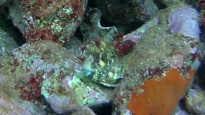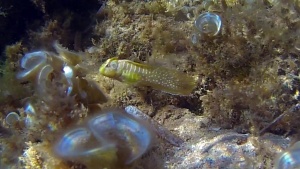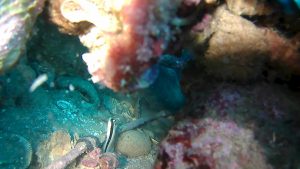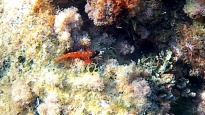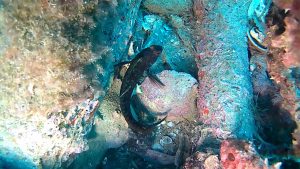Blennidi - Blenniidae
Bavosa Cornuta - Parablennius tentacularis
Bavosa mediterranea - Parablennius incognitus
Bavosa Pavone - Salaria Pavo
Longstriped blenny - Parablennius rouxi
Red Blenniidae - Lipophrys nigriceps
Ringneck blenny - Parablennius pilicornis
The Blenniidae are a family of mainly marine bony fish belonging to the order Perciformes. They are commonly known in Italian as Blenny.
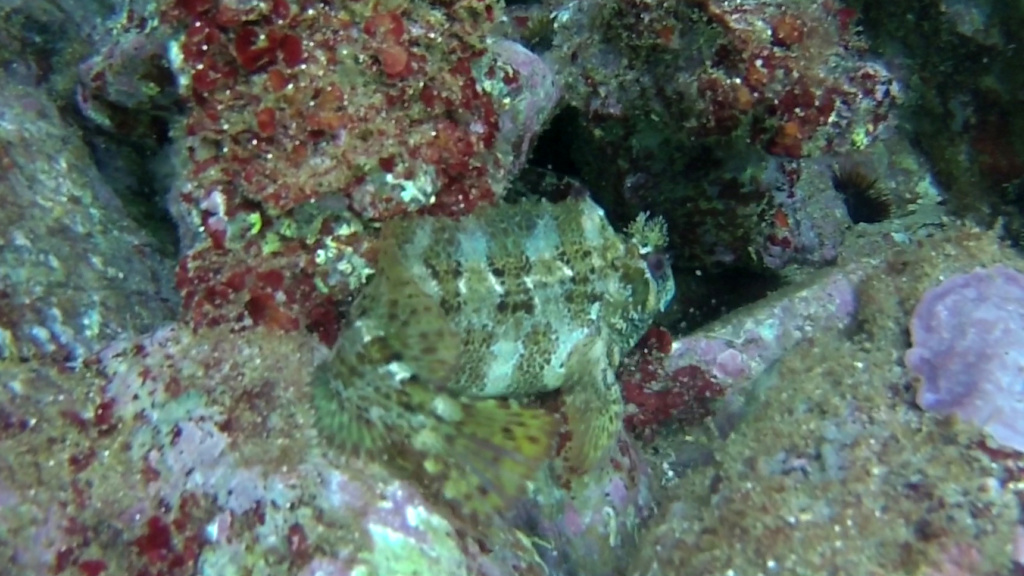
Distribution and habitat
They are widespread in almost all the seas of the world with the exception of the polar ones but they are particularly widespread in the tropical and subtropical ones. They are common with many species (many of them endemic) in the Mediterranean Sea. In general, endemism is common among the blennids because of the limited dispersal capacity of these fish. Few species (including Salaria fluviatilis) have adapted to life in fresh water, few others can be found in brackish water. Marine species are almost invariably coastal, frequent on hard surfaces, coral reefs, mangrove forests and near the river mouths, also in shallow waters, even the mesolittoral plan. Some species can get out of the water and stop on the rocks that have emerged for some time. All the Blenniidae are strictly benthic.
Description
The Blenniidae have an elongated body and a rounded snout or trunk, with an almost vertical face. Characteristic features of the family are the ridges and the skin lobes arranged on the head (nasal, supraorbital and nuchal tentacles), which are of great importance for the taxonomy of genera and species. The eyes are close to the dorsal profile of the head, often protruding. The body is flake-free but is covered with a slimy mucus. The teeth are numerous, robust, usually small even if some species have large caniniform fangs. In some species of the genus Meiacanthus these tusks are grooved and connected to venom glands [3]. The swim bladder is never present in adults. The lateral line can be complete or stop just above the head. The spiniform and soft rays of the fins are not easily distinguished because the former are soft and the latter are never divided. The dorsal fin is long, half composed of soft spiny rays and half of soft rays; it is usually of homogeneous height but in some species it can have a median incision and the two parts can be of different height and shape. The anal fin is long, has two spiny rays and uniform height. The caudal fin is never biloba. The ventral fins are inserted in a jugular position, are reduced with a very short thorny ray and from 1 to 3 soft rays; in two kinds are absent. The pectoral fins are wide.
The coloring is very variable, even within a few minutes, due to changes in the environmental conditions or the mood of the animal. Many species have camouflage coloring, others have bright colors.
The dimensions are generally less than 15 cm, Xiphasia setifer reaches 53 cm.
Biology
Supply They are usually omnivorous and feed on algae and invertebrates. Few species are planktophagous. Some Blenniidae eat flakes and pieces of skin from other fish. To approach large, potentially dangerous fish, the species Aspidontus taeniatus imitates the Labroides dimidiatus cleaner labride not only in appearance and livery but also in the characteristic way of swimming.
Reproduction
The Blennies are oviparous, with external fertilization, with adhesive eggs laid in a nest. The nest is formed by a hole in the rock or in the sediment, or in a bivalve molluscum valve. The eggs are supervised by the male or both parents. The larvae are pelagic and are often found in shallow coastal waters. In many species sexual dimorphism is evident.
https://it.wikipedia.org/wiki/Blenniidae
Gallery

